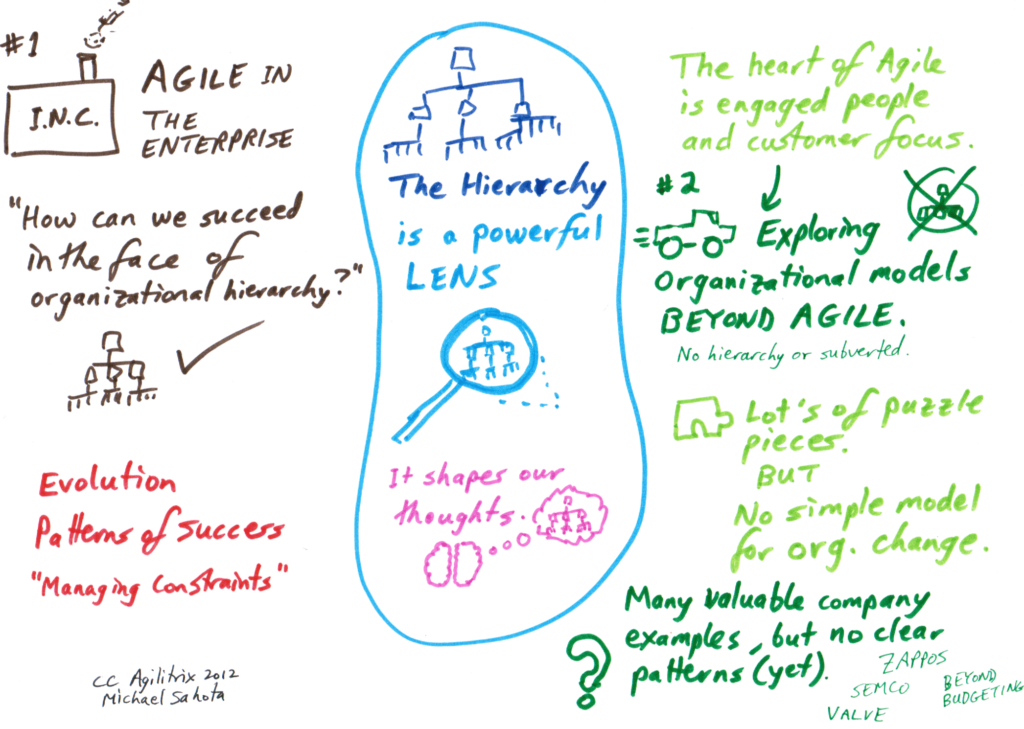The hierarchy is at the very center of our lives. We have experienced it in our school years and later when working in organizations. It’s existence and function is tacit in our understanding of reality.
At the Agile Alliance Change Agents workshop in Chicago in November, it became clear to me that the existence of hierarchy was greatly influencing the sessions. I sensed that there were two broad themes that emerged from the sessions.

One theme was around exploring Agile in the Enterprise. In this context, hierarchy was assumed. And much of the attention and energy seemed to be about finding ways to rise above and minimize the constraints it imposed. For example, how to shift focus on end-to-end flow.
Perhaps, the most insidious aspect of this is that our default assumptions around the hierarchy – it’s existence and requirements form the context of our thoughts. Just like how people are constrained to perceive reality in the movie the Matrix: we do not see or question it.
A second theme that emerged was around considering ways to create workplaces of joy – environments that foster an Agile mindset rather than constrict it. Agile provides a clear compelling model for organizing work and people. It does not, however, address the problem of organizational design: how to hire, promote and fire. How responsibility and leadership is enacted and enabled. This is an open problem. Included in this theme are questions such as team self-selection vs. deploying known patterns (e.g. Scrum). We need to find solutions to this so we can escape the Matrix.
Acknowledgements
First and foremost, I would like to thank the Agile Alliance for sponsoring this workshop and Diana Larsen for inviting me. I would also like to thank the whole group since these themes were an emergent result of all our combined questions, sharing and curiosity.
As a caveat, I am not trying to summarize all that happened, but rather provide one perspective.



